Designing Information Literacy Instruction
Designing Information Literacy Instruction
The Teaching Tripod Approach
Joan R. Kaplowitz
Rowman & Littlefield
Lanham Boulder New York Toronto Plymouth, UK
Published by Rowman & Littlefield
4501 Forbes Boulevard, Suite 200, Lanham, Maryland 20706
www.rowman.com
10 Thornbury Road, Plymouth PL6 7PP, United Kingdom
Copyright 2014 by Rowman & Littlefield
All rights reserved . No part of this book may be reproduced in any form or by any electronic or mechanical means, including information storage and retrieval systems, without written permission from the publisher, except by a reviewer who may quote passages in a review.
British Library Cataloguing in Publication Information Available
Library of Congress Cataloging-in-Publication Data
Kaplowitz, Joan R.
Designing information literacy instruction : the teaching tripod approach / Joan R. Kaplowitz.
pages cm
Includes bibliographical references and index.
ISBN 978-0-8108-8584-4 (pbk. : alk. paper)ISBN 978-0-8108-8585-1 (electronic)
1. Information literacyStudy and teaching. 2. Curriculum planning. I. Title.
ZA3075.K367 2014
028.7071dc23 2013051099
 The paper used in this publication meets the minimum requirements of American National Standard for Information SciencesPermanence of Paper for Printed Library Materials, ANSI/NISO Z39.48-1992.
The paper used in this publication meets the minimum requirements of American National Standard for Information SciencesPermanence of Paper for Printed Library Materials, ANSI/NISO Z39.48-1992.
Printed in the United States of America
Dedication
This book is dedicated to all my information literacy instruction (ILI) colleagues who have so generously shared their knowledge, experiences, and expertise with me over the years. Thank you all for helping me become a better library instructor. I also dedicate this book to my children, Hillary and Greg, both of whom have chosen somewhat nontraditional career paths and have demonstrated the value of following ones own passions. I want to be just like them when I grow up.
After being a librarian and teacher for close to thirty years, I have now reached that wonderful point in my career where those with whom I have shared my expertise are now taking leadership roles in the profession. I take great pleasure in watching as they go on to shape future generations of instructional librarians. And so this book is also for all those librarians who not only dedicated themselves to educating their own users, but who have also chosen to share their ideas about effective information literacy instruction with their colleagues. And so we can be assured that the ILI beat goes on.
Prefaceor Why Should You Read This Book
I know what you are thinking. Not another book on information literacy instruction (ILI)! And you are wonderinggiven all the other things you have to do, why would you add reading this book to your to-do list? In other words, you are asking yourself, Whats in it for me? So let me try to answer that question for you by sharing how I came to writing Designing Information Literacy Instruction: The Teaching Tripod Approach .
As is probably true for many of you, I had no formal training in teaching before entering the library professiondespite the fact that I had already obtained a doctorate in psychology and had previously taught on the college level for a few years after obtaining that degree. My doctorate meant I had a certain level of subject expertise, but it did not guarantee that I knew how to share that expertise with my students. I pretty much was making it up as I went along during those college teaching years.
However, my psychology background did instill in me a keen interest in teaching and learning, and this interest only grew more intense when I entered the library profession. It is probably why I dedicated much of my library career to ILI. Lacking formal teacher training, I made it my business (as many of you probably did as well) to educate myself about effective teaching through my readings and by attending relevant workshops and conferencesboth within librarianship and in other relevant disciplinesmost notably education, pedagogy, psychology, and teaching, as well as various aspects of instructional technology. My goal was to learn how to become the most effective teacher I could be.
As the years went by, I felt I had gotten a pretty good grounding in the art and craft of teaching. But I continued to feel as if I was missing some critical elements. I had always been a firm believer that careful planning was vital to creating good ILI, but it was not until my daughter Hillary began to pursue a career in instructional design (ID) that I came to realize what was missing from my own knowledge base. Here was an entire discipline dedicated to ensuring that instruction was effective and engaging. I knew I had to find out more about the field of ID.
As I began my explorations, I found a lot of common ground between the basic fundamentals of ID and what I had come to consider was important when developing my own ILI. IDs emphasis on starting with outcomes and looking at the interrelationships between outcomes, learning activities, and assessment particularly resonated with me. ID encourages us to think before we teach. It endorses and promotes a systematic and methodical approach to planning for and developing instructionall with the goal of improving instructional effectiveness. The more I read, the more I realized that I needed to formalize my somewhat casual approach to designing my instruction, and this lead to the development of the Teaching Tripod.
The Tripod formed the basis of my own instructional planning process during the latter part of my time as a frontline library instructor, and as well as for the development of the continuing education workshops I began to offer once I retired from my day job. While I had included brief mentions of the ideas that underlie the Tripod approach to planning in my writings, when I taught my library school students over the years, I thought the time had come to put a more fully fleshed out version of these ideas down on paper, and so this book was born.
The format for the book is based on the one-shot workshops I have been offering and is intended to be a kind of teach yourself workbook. In order to accomplish that, I have laid out each chapter in the same way I would if I were teaching this material in person. So each chapter starts with some kind of hook or attention-getting (I hope) paragraph, followed by a series of questions to keep in mind as you read that particular chapter. These questions were my way of sharing the outcomes I set for each chapter. Next you will see a brief sales pitch paragraph that is intended to answer the Whats in it for me if I read this chapter? question.
Each chapter is interspersed with worksheets intended to help you check for comprehension and review the information as you go, thus offering you the opportunity to actively engage with the material. And each chapter ends with a What Stuck? sectiona reflection opportunity that asks you to review the material with an eye toward sharing what you have learned with your colleagues. So you can read the book to teach yourself about ID for ILI, and also use it as the basis for teaching others about the concepts and methods presented.
The book begins with a discussion of why instruction librarians should care about ID (chapter 1). Chapter 2 is an attempt to introduce the reader to the field of ID. It is, of course, just a brief glimpse into the history and theory of the field, but hopefully there is enough in there to help you get a feel for ID, learn some of the jargon, and introduce you to some major figures and landmarks in the development of the field. Chapter 3 offers a first look at the Teaching Tripod as a potentially useful way for instruction librarians to incorporate ID into their own practice. In a sense, the Tripod is directed at selecting the content and how you will go about sharing that content with your learners. However, before you can decide on what and how to teach, you must find out what your learners need to know as well as what is feasible in your environment. So chapter 4 addresses how to gather the necessary background information needed to help you make appropriate instructional decisions. In other words, chapter 4 discusses the concept of needs assessments.
Next page
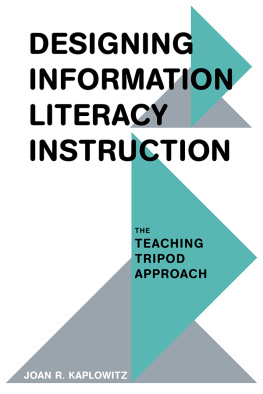
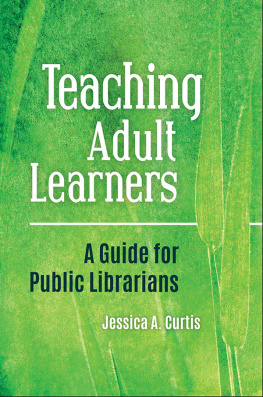

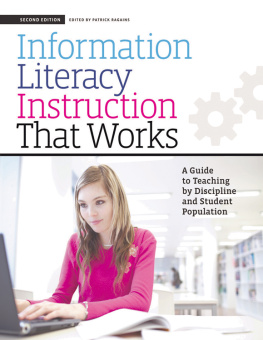
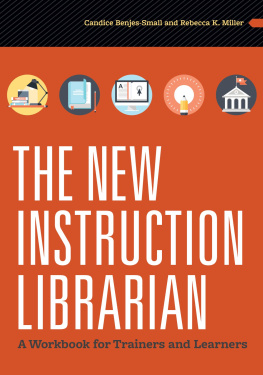



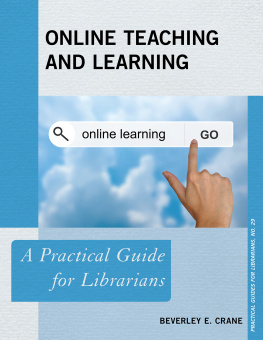

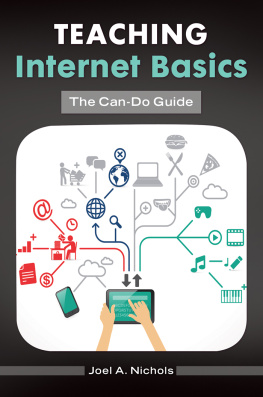

 The paper used in this publication meets the minimum requirements of American National Standard for Information SciencesPermanence of Paper for Printed Library Materials, ANSI/NISO Z39.48-1992.
The paper used in this publication meets the minimum requirements of American National Standard for Information SciencesPermanence of Paper for Printed Library Materials, ANSI/NISO Z39.48-1992.